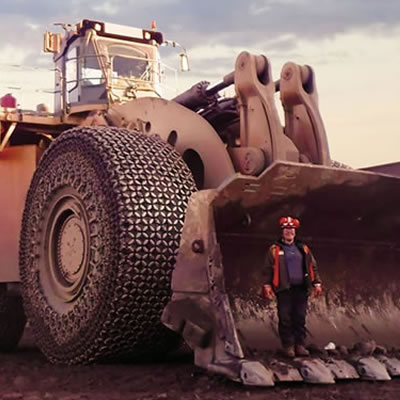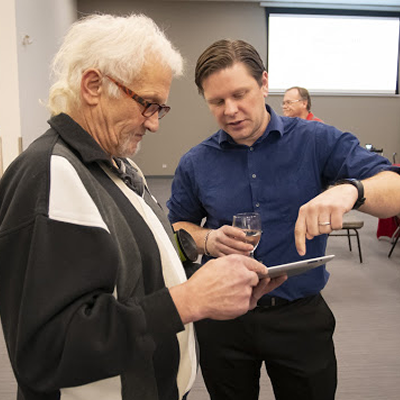SGS Geostat wins Integra Gold Corp’s Gold Rush Challenge
SGS Geostat won $500,000 and generated interest in the company's disruptive innovation
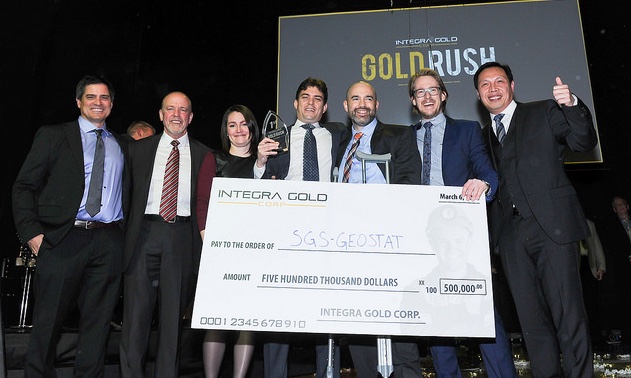
The members of the SGS Geostat award-winning team were (L to R): Marcel Costa, Dave Smercina, Amanda Landriault, Doug Hatfield, Guy Desharnais, Jean-Philippe Paiement and Lawrence Ng. — George Pimentel Photography
In November of 2015, Canadian Mining & Energy published an article announcing Integra Gold Corp’s Gold Rush Challenge in which teams were given access to approximately 26 gigabytes of raw data to analyze and interpret in order to find the next big gold discovery on the historical Sigma and Lamaque mines in Val-d’Or, Quebec. Teams were given from September 16 through December 1, 2015, to submit proposals, which were then handed over to the judges. The top five teams presented their proposals to a panel of industry titans in a shark tank-style live finale in front of a crowd of over 400 people at The Carlu in Toronto. Quebec’s SGS Geostat was awarded first place and $500,000 for its efforts.
SGS Geostat’s team consisted of three main members, Guy Desharnais who acted as team captain, as well as Jean-Philippe (JP) Paiement and Doug Hatfield. The rest of the staff at the Blainville, Quebec, office participated in various ways to help support the team throughout the process. The team compiled the 26 gigabytes of raw data into a 30-page report and seven-minute presentation while still operating normal business operations. “Mostly we were working on our non-chargeable time in the office, but we also worked quite a bit in the evening and weekends to make sure we were going to hit that deadline on our own time,” said Desharnais.
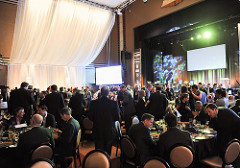
The SGS Geostat Team beat out four other finalists and emerged as the winner of the Gold Rush Challenge by Integra Gold. — George Pimentel Photography
Integra received 100 submissions for the challenge from over 80 countries. To be awarded first place was quite an honour for SGS Geostat. “We felt confident we had done something that was top shelf and something that would stand up to any scrutiny, but what other groups were going to try to do and how our exploration project would stand up to those were hard to judge,” said Desharnais. “We were very satisfied by our final report and reviewing it before we went to the final gala reaffirmed we had done something really incredible.”
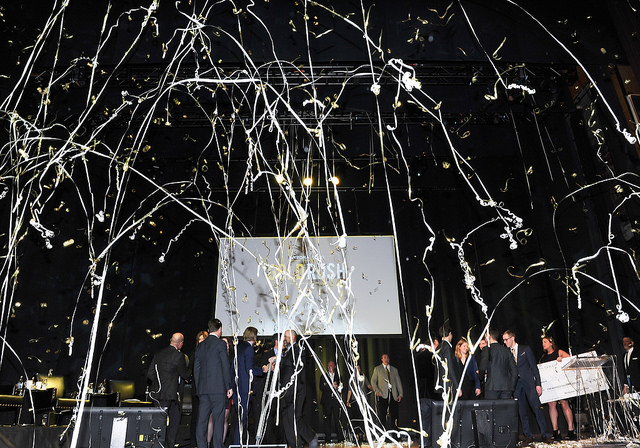
The SGS Geostat team celebrates its win at the gala where Integra Gold announced the winner of the Gold Rush Challenge. — George Pimentel Photography
Team SGS Geostat had no need to worry as its proposal combining traditional geological methods with machine learning was exactly what the judges were looking for and what Integra was hoping would come out of the challenge. “The proposal from SGS Geostat represents the disruptive innovation we saw in the Gold Rush Challenge. We saw the tech sector and the mining sector collide and unravel the great mystery of discovery. SGS Geostat beat the odds, advancing out of the semi-final round and impressing the industry titans with their embrace of machine learning and virtual reality while also emphasizing the importance of traditional, data-driven geology,” said Integra executive chairman George Salamis.
Digging into the technology a little, SGS Geostat interpolated and extrapolated the historical data into a block model and then used its own in-house software called Genesis, which had a recently developed link to a virtual reality visualization tool named Oculus Rift. They then were able to plan the drill holes using that software and figure out which angles and orientations of the targets were best.
“The other thing we did that was really innovative and outside the box was using a machine-learning technique, which is a subfield of artificial intelligence,” said Desharnais. “Basically we pushed all the data as best we could throughout this block model to a depth of two kilometres and then JP and I came up with our best weighting system to try to provide a prospectivity score, so each block then has a score which tells you the probability or prospectivity of each one of those blocks. We took that raw data and sent it to Doug . . . He came up with the machine-learning technique that we used, which is called Bayesian Gaussian Process Latent Variable Modelling. Essentially it takes all that raw data and looks for relationships between all the raw data points to come out with a separate unbiased predictor of where the gold is within the property.” These two separate prospectivity scores can easily be refreshed with new data as drilling begins on the property and new information is uncovered.
The team used both sets of scores—the geological knowledge-based ranking system and the unbiased raw data of where the gold mineralization is—to find linkages between the data to predict the gold and then find the same set of predictors in other blocks without trying to force it based on any external technology. “The artificial intelligence is brand new and we’re actually looking to develop and integrate that into our software now,” said Desharnais. “It’s totally unbiased and it can see correlations between data that humans can not identify otherwise." This software will become increasingly valuable in the future as techniques such as hyperspectral core scanning provides exceedingly rich data, but Desharnais assures it will never replace traditional geological methods.
Integra has announced it plans on using this information gathered from the Gold Rush Challenge to start drilling on the property as soon as possible. “It’s very exciting to see what the result is," said Desharnais. "We’re keen to see how many of our planned targets are going to come out with something good."
Regardless of the results, SGS Geostat will continue seeing benefits from its first-place finish for some time to come. “Our existing clients are super proud to be associated with the winning team and we’re having conversations with people, which we may not have otherwise been talking to. They are excited about the prospect of using these new tools and we’re very interested to use them on any data set that is available to us. It’s been very beneficial for us and we’re very excited about the whole thing,” said Desharnais.
With the success of the Gold Rush Challenge, it won’t be surprising if other companies offer similar challenges of their own in the near future.


